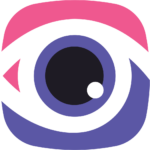Vision therapy is a personalized program designed to strengthen the eyes and brain connection, addressing various visual challenges. By using exercises, tools, and technology, it improves conditions like lazy eye, double vision, or eye strain. It’s suitable for children and adults and offers an alternative to surgery or long-term reliance on corrective lenses.
Picture this: You’ve been experiencing headaches and blurry vision after long hours at work or your child is struggling with reading. A trip to the eye doctor reveals that glasses aren’t the complete solution.
This article explores what vision therapy is, how it works, and how it could improve your visual health. Whether you’re a parent, student, or someone dealing with eye strain, this guide is here to help.
What Is Vision Therapy?
It is a structured treatment program focusing on improving visual skills and comfort. Unlike glasses or contacts that correct refractive errors (like nearsightedness), it strengthens the neural pathways between the eyes and the brain. Read more about the science behind vision therapy in our previous publication.
Pro Tip: check out a guide by Lynn Hellerstein, O.D. on vision therapy techniques for children and adults to improve focus, coordination, and visual learning
Key features of vision therapy include:
- Tailored programs to meet individual needs.
- Use of specialized tools such as prisms, filters, and computer-assisted exercises.
- A focus on long-term improvement rather than quick fixes.
How It Work?
Vision therapy consists of targeted exercises and therapies aimed at training the eyes and brain to function more effectively together.
Steps:
| Step | Description |
| Initial Assessment | Comprehensive evaluation of visual skills |
| Personalized Plan | Development of specific exercises for your needs. |
| Regular Sessions | Weekly in-office sessions with a vision therapist. |
| Home Exercises | Practice tasks to reinforce skills daily |
The exercises might include eye tracking, focusing tasks, and visual coordination activities. Over time, these improve the ability to process visual information.
Benefits of Vision Therapy
- For Children:
- Helps with reading difficulties and poor hand-eye coordination.
- Effective for amblyopia (lazy eye) or strabismus (crossed eyes).
- For Adults:
- Alleviates symptoms of computer vision syndrome.
- Improves post-concussion visual symptoms.
Common Symptoms:
- Frequent headaches.
- Double vision or blurred vision.
- Trouble focusing for long periods.
Pros and Cons
| Pros | Cons |
| Non-invasive and drug-free | Can be time-intensive |
| Customized to individual needs | Requires commitment to regular sessions |
| Suitable for children and adults | May not be covered by insurance |
Vision Therapy vs. Corrective Lenses
While glasses or contacts address structural eye related problems, vision therapy improves functional issues like eye coordination and focus. Both can complement each other depending on your diagnosis.
An Alternative Solution: VisionUp App
For those who prefer flexibility, apps like VisionUp can provide guided exercises to supplement or replace in-office therapy. With reminders and tailored programs, they make vision therapy accessible anytime.
3 Key Takeaways:
- This treatment strengthens the brain-eye connection, treating various conditions.
- It’s a long-term, personalized solution for improved vision skills.
- Tools like VisionUp can make therapy accessible at home.
FAQs
1. What conditions can vision therapy treat?
This program treats lazy eye, double vision, convergence insufficiency, and computer vision syndrome.
2. How long does a the treatment last?
Typically, programs last 6-9 months, but this varies by individual needs.
4. Is the program covered by insurance?
Coverage depends on the insurer, but many plans don’t include it.
